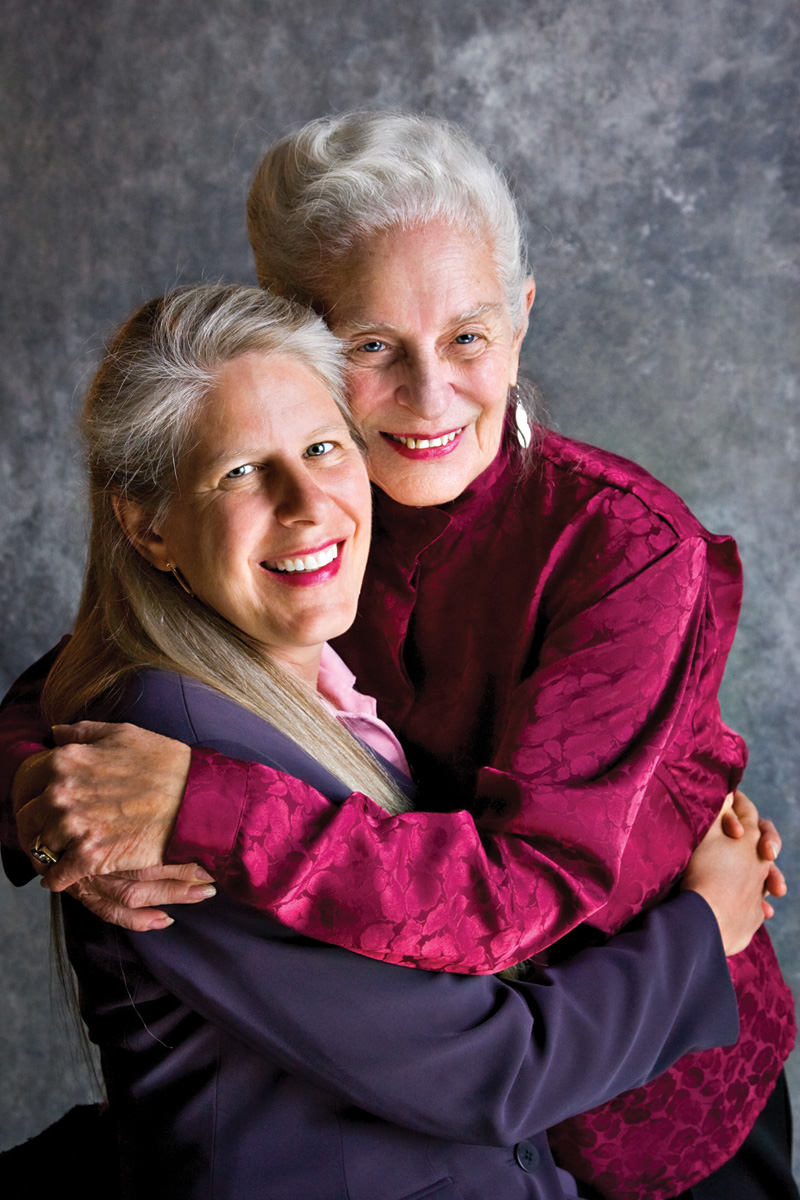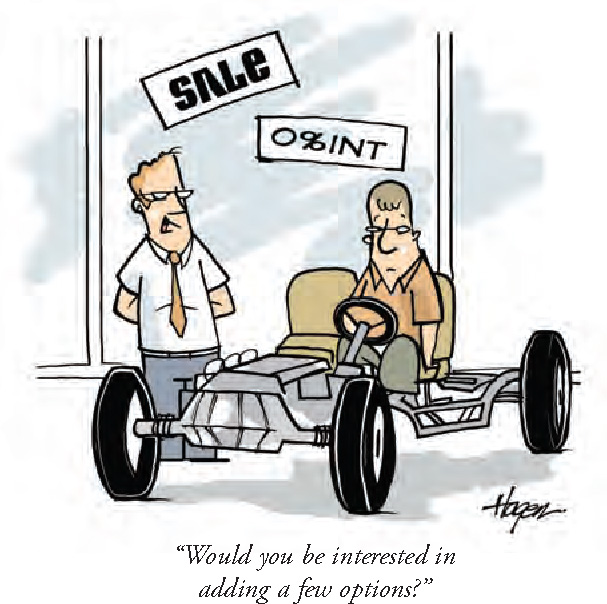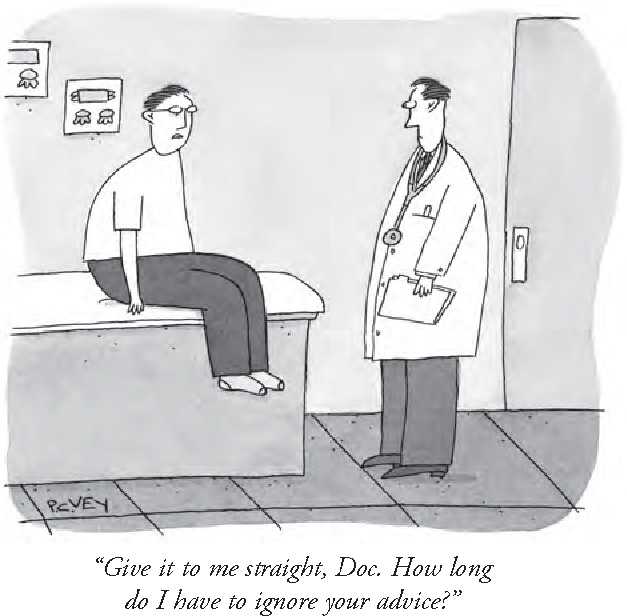7.3 Decision Making
UNDER THE KNIFE

 With the help of her mother’s gentle coaxing, Dr. Jill made the decision to go through with surgery. She left the hospital and returned to her apartment where G.G. could help her relearn basic life skills such as walking, reading, and doing the laundry. Two weeks later, she returned to Massachusetts General for the surgery (Taylor, 2006).
With the help of her mother’s gentle coaxing, Dr. Jill made the decision to go through with surgery. She left the hospital and returned to her apartment where G.G. could help her relearn basic life skills such as walking, reading, and doing the laundry. Two weeks later, she returned to Massachusetts General for the surgery (Taylor, 2006).
Late in the afternoon of December 27, 1996, Dr. Jill awoke in the recovery room with the left side of her head shaved clean and a 9-inch wound in the shape of a horseshoe (Taylor, 2006). She had survived the operation, and she didn’t feel drained and confused, as you might expect. “Upon awakening, I realized that I felt different now. There was brightness in my spirit again and I felt happy”.
“Say something!” demanded G.G., as she approached her daughter’s bedside (Taylor, 2006, p. 113). G.G. needed to know that her daughter could still use language. Surgeons had just spent hours poking around her left hemisphere, home to the language-processing regions of Broca’s and Wernicke’s areas. The surgeons might have inadvertently short-circuited one of these key regions, compromising her ability to speak. Dr. Jill opened her mouth and responded, and she and G.G. both became teary-eyed. The operation appeared to have gone well; Dr. Jill, it seemed, had made the right decision (Taylor, 2006).
Decisions, Decisions
LO 7 Define decision making and explain how heuristics can lead us astray.
You may be wondering how decision making differs from problem solving. As you now know, problem solving refers to the approaches that can be used to achieve a goal. Decision making is the cognitive process of choosing from those alternatives. Thus, problem solving and decision making can occur at the same time.
Predicting the Future
Decision making often involves predicting the future: What is the likelihood that Event A will occur under these circumstances? How about Event B? In cases like these, all we can do is make an educated guess, and some situations lend themselves to more accurate guesses than others. If the weather channel predicts there is a 99% chance of thunderstorms today, it’s fairly safe to assume it’s going to rain. Better bring your umbrella.
But there are many times when predicting the future is like rolling dice—you have almost no way of knowing the outcome. Suppose you are searching for a used car on craigslist. How do you choose a “gently used” car from among the hundreds listed in your locality? With no prior knowledge of the cars or their owners (apart from whatever information they choose to post on craigslist), all you can do is hope the car you choose is not a lemon. But who knows if your gamble is going to work? Choices that hinge on predictions can be very risky, and we sometimes make the wrong decision.
Single Feature
There are many ways to go about making decisions. One way is to focus on a single aspect, or feature, of the situation. Let’s say you are trying to decide where to stop for gas. If your only criterion is cost, you will seek out the gas station with the cheapest gasoline, paying no attention to what kind of donuts they sell inside or how clean their bathroom may be. The single feature on which you are basing your decision (where to stop for gas) is the price of the fuel (not tasty donuts or a clean bathroom).
300
Additive Model

The single-feature approach may not be effective for making complex decisions, as there are many features to consider. With a more complex decision, such as which car to purchase, you might create a list of the primary features you consider important (gas mileage, safety ratings, sound system, and so on). Using this list, you could rate each of the possible choices (for example, Ford Focus versus Toyota Prius) according to their features, and then tally these ratings to see which car comes out on top, with the highest score winning. This method of calculating the highest rating is often referred to as an additive model of decision making.
Decisions, Heuristics, and the Confirmation Bias
At the start of the section, we mentioned that decision making often involves making predictions, and different scenarios afford different levels of certainty about the future. Heuristics, which involve a rule of thumb or a broad application of a strategy, can be used to help predict the probability of an event occurring. Unfortunately, heuristics can lead us astray in our assessment of situations or prediction of outcomes. Daniel Kahneman and Amos Tversky (1973) were among the first to systematically research the ways in which heuristics can be ineffective. They found that people are prone to ignore important information while using heuristics (Kahneman & Tversky, 1996). This is particularly true for the availability heuristic and the representativeness heuristic.
The Availability Heuristic
Using the availability heuristic, we predict the probability of something happening in the future based on how easily we can recall a similar type of event from the past. The availability heuristic is essentially a decision-making strategy that relies on memory. If we can easily recall a certain event, then we tend to base our decisions on the assumption that it can happen again. Many factors make an event more available, including its recency, frequency, familiarity, and vividness. Let’s look at each of these categories.
Imagine the year is 2010 and you have just learned about the mine collapse that left 33 Chilean workers trapped underground. If asked to predict the likelihood of a similar mining collapse occurring in the near future, your estimation would likely be higher than normal because you just heard about the Chilean incident. Our predictions using the availability heuristic are based on how easily we can recall similar events from the past, and the more recently a similar situation has occurred, the more easily it will be recalled. With an event still fresh in our minds, we are more likely to overestimate the odds of a similar event occurring in the future.
CONNECTIONS
In Chapter 6, we described the recency effect, which is the tendency to remember items more accurately when they appear at the end of a list or series. Here, we discuss the tendency to remember similar events better if they have occurred recently.
Now imagine that you were asked to decide the following: Do more students at your college use Macs or PCs? Before deciding how to answer, you would probably think about the number of students you have seen using these types of computers and make an estimation based on that tally. In this case, the frequency of occurrence is the factor that influences your decision. You rely on your recall of seeing students using Macs or PCs in the hall, classroom, and library. The availability heuristic can be accurate for determining frequency, but it only works when all the right information is available and in its proper context. If you are in the graphic design department, for example, chances are you’ll see more Macs than PCs. Based strictly on your observations from a single department, your sample would not be representative of the entire college, and the availability heuristic would lead you to the wrong answer.
CONNECTIONS
In Chapter 1, we discussed the importance of using a representative sample for making generalizations from a sample to the population. With the use of the availability heuristic, we must be careful that the sample used is representative; sometimes the memories in our “sample” are not randomly selected. Instead, they are chosen because of their recency, frequency, familiarity, and vividness.
The familiarity of an event might also lead to inaccurate estimates. If you and your friends are all avid PC users, you may overestimate the extent to which others are using PCs. The more familiar you are with a situation, the more likely you are to predict a similar occurrence in the future.
301
Finally, the vividness of an event can influence our recall. Try to conjure up an image of someone winning the “big one” at a casino. There are lights, sounds, and a lot of hubbub. The prizewinner jumps joyfully in the air, hollering and crying at the top of his lungs, with onlookers clapping and shouting in approval. This type of dramatic display never occurs when some poor guy loses his last $100; the details of a losing bet would consequently be far more difficult to recall. Because the winning image is more vivid, we are more likely to recall it and thus to overestimate the likelihood it will occur in our own lives. Memorable imagery leads us to believe that these types of wins happen all the time, when in fact they are very rare. Tversky and Kahneman (1982) suggested that, if an event has made a striking impression on you, even a rare occurrence such as an airplane crash, you will be more likely to overestimate the probability of it happening again.
THINK again
Fearing the Friendly Skies
 Are people generally more afraid of flying in an airplane or riding in a car? Airplanes seem frightening to many people, yet the statistics suggest we should be more concerned about driving. The odds of getting into a fatal traffic accident are 1 in 98, compared to about 1 in 7,000 for a plane crash (National Safety Council, 2012).
Are people generally more afraid of flying in an airplane or riding in a car? Airplanes seem frightening to many people, yet the statistics suggest we should be more concerned about driving. The odds of getting into a fatal traffic accident are 1 in 98, compared to about 1 in 7,000 for a plane crash (National Safety Council, 2012).
Now consider the weeks and months following the terrorist attacks of September 11, 2001. How did people feel about flying after seeing what happened to the hijacked planes on the news? Countless people stayed away from airports and airplanes. So many would-be air travelers took to the roads after 9/11 that there was a temporary surge in traffic fatalities. In the 3 months following September 11th, more people died in car accidents (apparently trying to avoid air travel) than did in the four hijacked airplanes (Gigerenzer, 2004). In this unfortunate case, people were increasing their risk of death by trying to reduce it.
SIT BACK, RELAX, AND ENJOY THE FLIGHT.

Risk perception is complex. A number of factors contribute to an overblown fear of flying. The fact that airplane crashes and terrorist attacks are beyond one’s control and represent the potential for enormous disasters tends to increase many people’s perceptions of risk (Slovic & Weber, 2002, April 12–13). And, as we’ve learned from our earlier discussion of the availability heuristic, people tend to deem events more probable when similar scenarios are easy to recall. A highly detailed media report of an airplane crash is far more likely to linger in one’s thoughts than a traffic accident glossed over on the six o’clock news.
The Representativeness Heuristic
Sometimes we have to make decisions based on our judgment of a situation or person. The representativeness heuristic evaluates the degree to which their primary characteristics are similar to our prototypes. With the representativeness heuristic, we make quick, effortless judgments about how closely a person or situation fits our preconceived prototype (Shah & Oppenheimer, 2008). In contrast, with the availability heuristic people access information from their long-term memory to make predictions about events.
Let’s examine how the representativeness heuristic works in practice. Peter is a middle-aged man. He is conservative, a lovely speaker, thoughtful, and well read. He lives alone in an apartment in the city. Is Peter a truck driver or a poet? Forced to choose between these two occupations and using the representativeness heuristic, the majority of people would likely guess that Peter is a poet because his description better matches their prototype of a poet than their prototype of a truck driver. But this approach fails to consider the base rate (the prevalence of features or events in the population) of these occupations. There are far more truck drivers than poets, suggesting the better guess would be that Peter is a truck driver. The representativeness heuristic can be useful, but the accuracy of our information must be taken into account, as the poet/truck driver example illustrates; our conclusions should be drawn from base rates, not stereotypes. The other limitation of the representativeness heuristic is that most people fail to recognize the problems associated with relying on small samples. The smaller the sample, the less likely it is to provide a good representation of the population, and generally our prototypes are based on exposure to limited samples.
302

The Confirmation Bias
We can also miss important information through the confirmation bias, when we unintentionally look for evidence that upholds our beliefs. People tend to overlook or discount evidence that runs counter to their original beliefs or positions. For example, you decide to go on a date with someone you are really interested in, even though you don’t know him very well. You Google stalk him and look on his Facebook page to see what his friends write on his wall, and you immediately connect with one of the “likes” he has. With this information in hand, you stop your search, convinced you now have evidence to support your decision to go out with him. We tend to focus on information that supports favorable outcomes (Krizan & Windschitl, 2007; Scherer, Windschitl, O’Rourke, & Smith, 2012), but what other sources of information could you use to avoid the confirmation bias in this case? The confirmation bias is not a conscious act; we do not deliberately set out looking for information to support what we already think. The danger of the confirmation bias is that we miss or ignore relevant (and possibly contradictory) information without conscious intent.
You’ve Been Framed!
We have spent a great deal of time discussing the limitations that impede the decision maker. But in many situations, the characteristics of the problem itself, or the presentation of the problem, are to blame.
What’s in a Frame?
The framing effect demonstrates how the wording of questions or the context of a problem can influence the outcome of a decision. To look at this effect, researchers conducted a study in which they instructed participants to imagine that they had purchased a $10 ticket to attend a show, but lost their ticket on the way to the theater. Each participant was then asked whether he or she would be willing to pay $10 for another ticket. Only 46% of participants indicated that they would spend another $10 for a new ticket. Participants were next instructed to imagine another situation: In it, they planned to buy a $10 ticket to attend a show, but once they got in the ticket line, they suddenly realized that they had lost one of their $10 bills. Faced with this second scenario, 88% of the participants were willing to fork over the $10. In each case, the participants were faced with the proposition of spending an additional and unexpected $10, but they tended to make different decisions in response to the different circumstances. The background information framing these hypothetical scenarios influenced the decisions made, even though the outcomes would have been identical—a net loss of $10 (Kahneman & Tversky, 1984; Tversky & Kahneman, 1981).
303
What’s in a Question?
The specific wording of questions should also be considered. One study found that people are more likely to prefer ground beef if it is described as “80% lean,” as opposed to “20% fat.” Although 80% lean and 20% fat describe exactly the same product, these phrases evoke very different responses (Johnson, 1987). Another study investigated the effects of question framing on women using a telephone-based counseling service to inquire about the side effects of drugs taken during pregnancy (Jasper, Goel, Einarson, Gallo, & Koren, 2001). The women calling in were assigned to one of two groups. Women in the first group were told that “in every pregnancy there is a 1–3% chance that a woman will give birth to a child who has a major birth defect. This drug has not been shown to change that”. Women in the second group were told that “in every pregnancy, there is a 97–99% chance that a woman will give birth to a child who does not have a major birth defect. This drug has not been shown to change that”. The researchers then followed up with a series of questions. Participants in the first group believed that they faced a greater risk of bearing a child with a birth defect if they had taken the drug than those in the second group. Decision making is often influenced by whether a question is worded in a positive way (the glass is half full) or in a negative way (the glass is half empty) (Huber, Neale, & Northcraft, 1987).
THINK again
Let Them Eat Cake
HOW MUCH DO YOU HAVE ON YOUR PLATE?
 Decisions can also be influenced by how much we have “on our plate” at a given time. Imagine making a decision when you are trying to cook dinner, watch the nightly news, and discipline your dog all at the same time. A study by Shiv and Fedorikhin (1999) helps us understand that stressful external demands impact how we make decisions. The researchers asked one group of participants to memorize two numbers and the other group to keep a string of seven numbers in their minds. Meanwhile, participants were offered the choice of fruit or chocolate cake to eat. Surprisingly, the people who only had to memorize the two numbers selected the fruit every time, whereas those trying to remember the string of seven numbers tended to choose the cake! What this suggests is that our stress level impacts our decisions—and not in a way that benefits our waistlines.
Decisions can also be influenced by how much we have “on our plate” at a given time. Imagine making a decision when you are trying to cook dinner, watch the nightly news, and discipline your dog all at the same time. A study by Shiv and Fedorikhin (1999) helps us understand that stressful external demands impact how we make decisions. The researchers asked one group of participants to memorize two numbers and the other group to keep a string of seven numbers in their minds. Meanwhile, participants were offered the choice of fruit or chocolate cake to eat. Surprisingly, the people who only had to memorize the two numbers selected the fruit every time, whereas those trying to remember the string of seven numbers tended to choose the cake! What this suggests is that our stress level impacts our decisions—and not in a way that benefits our waistlines.
This section has focused on decision making, exploring the ways that heuristics, confirmation bias, and framing can lead us to faulty decisions. Our next discussion centers on one of the most extraordinary qualities of human cognition: language.
show what you know
Question 7.8
1. _________ refers to the cognitive process of choosing from a variety of alternatives you might use to reach your goal.
Question 7.9
2. We often predict the probability of an event happening in the future based on how easily we can recall a similar type of event from the past. This is known as the:
- framing effect.
- confirmation bias.
- representativeness heuristic.
- availability heuristic.
Question 7.10
3. A good friend is terrified of flying. How would you use your knowledge of heuristics to make him feel less afraid?
Question 7.11
4. Your friend just told you about someone she met on the train. He seemed well spoken, thoughtful, and very informed about current events. She asked you to guess whether he was a factory worker or a politician. Your best guess in this situation, based on the base rates of these occupations, would be that he worked in a factory. But you choose politician based on your prototypes of these two occupations. This is a good example of:
- the representativeness heuristic.
- the confirmation bias.
- the availability heuristic.
- how the wording of a question can influence the outcome.
 CHECK YOUR ANSWERS IN APPENDIX C.
CHECK YOUR ANSWERS IN APPENDIX C.
304